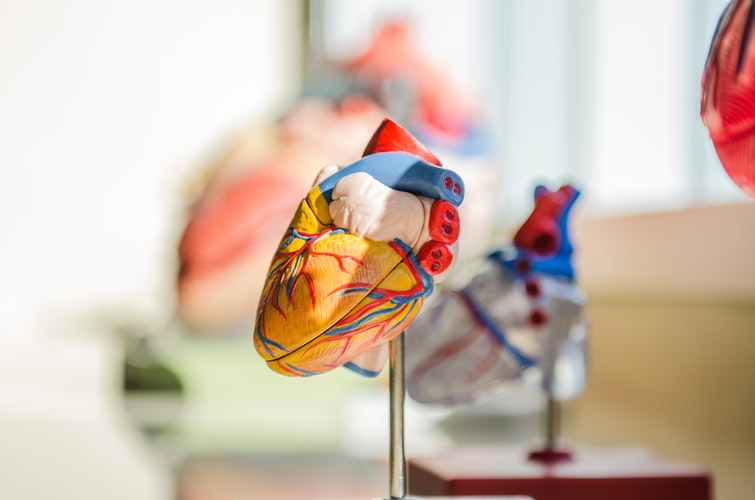With rise in popularity of cannabis being used for medicinal purposes, cannabinoids are now extensively studied for their wide range of potential for treating various ailments. Cardiovascular Diseases(CVD), at the brink of turning into an epidemic, is the reason behind leading number of deaths in the west. Medicinal cannabis, as an aid for treatment of CVD, is an upcoming branch of, cannabis for diseases, attracting attention. Cannabis strain, especially, cannabis sativa L, has been used since a long time as medicinal cannabis. The nervous system in human body generates cardiovascular response to the cannabinoid, THC, that is further regulated by the human cannabinoid receptors present throughout the body to help prevent the causes that lead to the occurrence of cardiovascular disease. With cannabis legalisation, slowly taking place across the world, surveys have revealed that medical marijuana users report effects such as stabilization of angina episodes, increased cardiovascular well‐being and health(Alfulaij et al). This article will discuss the possible effects of medicinal cannabis for cardiovascular diseases.
1. Role of Endocannabinoid System in CVD treatment
The human endocannabinoid system(ECS) plays an important role in regulation of cardiovascular system. Since ECS is responsible for maintaining an overall balance, vis a vis, homeostasis, in the body, when the cardiovascular system is entering a disease state, the ECS gets dysregulated as well. This dysregulation occurs parallel to the development of symptoms of CVD, hence the link between both becomes evident.
ECS, made up of two primarily identified receptors, CB1 and CB2 receptors, activated upon by, binding of endocannabinoids, have important effects on cardiovascular system, as their sites of action are located in the central and peripheral nervous system. The link between ECS and CVD, has suggested that modulation of ECS, using medicinal marijuana, is leading to cannabis emerging as a therapeutic avenue for treatment of CVD. CVD encompasses several disorders such as, atherosclerosis, hypertension, myocardial infarction, and chronic heart failure.
2. Cannabis for Cardiovascular Disease (CVD)
Due to the disregulation of endocannabinoids during the occurrence of any CVD, it is exogenous cannabinoids obtained from cannabis that helps in its stabilisation. Studies report that cannabinoids, THC, cannabinol and cannabidiol(CBD), have the potential to contribute in a significant manner for treatment of CVD. These cannabinoids individually as well as components of synthetic mixtures of cannabinoids, are found to provide neuroprotection in both in vitro as well as in vivo experiments.
2.1 THC for CVD
The main reason of heart disease and stroke in Western countries is a chronic inflammatory disease, Atherosclerosis. In this condition, the concentration of immune cells becomes very high. THC, known to exert potent anti-inflammatory, immunomodulatory and analgesic effects, helps in downregulation of T-helper 1 immune cells, that contribute to the inflammation. Consumption of THC and its derivatives orally, has been effective in inhibition of the progress of the disease. Macrophage chemotaxis, which is a crucial step for the development of atherosclerosis, was also inhibited in vitro by THC(Steffens et al). This process is based on the binding affinity of THC to CB2 receptors. However, since THC also has psychoactive properties, medicines are mostly comprised of a mixture of non-psychoactive CBD and THC, mixed in the right proportion, such that CBD counters the psychoactive effects of THC.
2.2 CBD for CVD
Since the binding affinity of CBD to CB1 receptors is low, CBD acts on the ionotropic cannabinoid receptors. The transient receptor potential cation channel subfamily V, member 1 (TRPV1) is an ionotropic non‐selective cation channel that is predominantly expressed in peripheral sensory neurons and widespread in the cardiovascular system(Alfulaji et al). In addition to ECS, TRPV1 is activated by CBD, cannabinol, cannabigerol and some propyl homologs of THC(Watanabe et al).
An experiement conducted on mice has shown that CBD helps fasten the metabolic processes, which then lowers the incidence of diabetes in nonobese diabetic mice. Diabetes, being the initial stage of complicated heart diseases, CBD helps in preventing the root to take ground. CBD, upon activating the ionotropic receptors, mediates the ischemic period, which when left unattended would lead to myocardial infarction, and peripheral artery disease.
Word From HempStreet
Since most marijuana users also happen to smoke tobacco, studies results have quite often been inconclusive. The cannabinoids being consumed in several forms, it is very important to ensure the safety and efficacy of cannabis-derived medicines, available at cannabis dispensaries. They should only be purchased and consumed when prescribed. While smoking and inhaling might be dangerous for patients suffering from CVD, CBD available in the form of CBD oil, CBD tinctures, could be viable options. Although research on cannabis for cardiovascular diseases, is at a nascent stage, there have been promising results of cannabinoids for treatment of CVD. However, several dimensions of complexity into the same topic are yet to be studied.
References
Alfulaji, N., Meiners, F., Michalek, J., et al. “Cannabinoids, the Heart of the Matter” Journal of the American Heart Association. 7.14 (2018)https://doi.org/10.1161/JAHA.118.009099
Rajesh, M., Mukhopadhyay, P., Batkai, S., et al. “Cannabidiol attenuates high glucose-induced endothelial cell inflammatory response and barrier disruption” American Journal of Physiology- Heart and Circulatory Physiology. 293.1 (2007) https://doi.org/10.1152/ajpheart.00236.2007
Steffens, S., Veillard, N., Arnaud, C. et al. “Low dose oral cannabinoid therapy reduces progression of atherosclerosis in mice.” Nature. 434, 782–786 (2005). https://doi.org/10.1038/nature03389
Watanabe, H., Vriens, J., Prenen, J. et al. “Anandamide and arachidonic acid use epoxyeicosatrienoic acids to activate TRPV4 channels.” Nature. 434–438 (2003). https://doi.org/10.1038/nature01807




